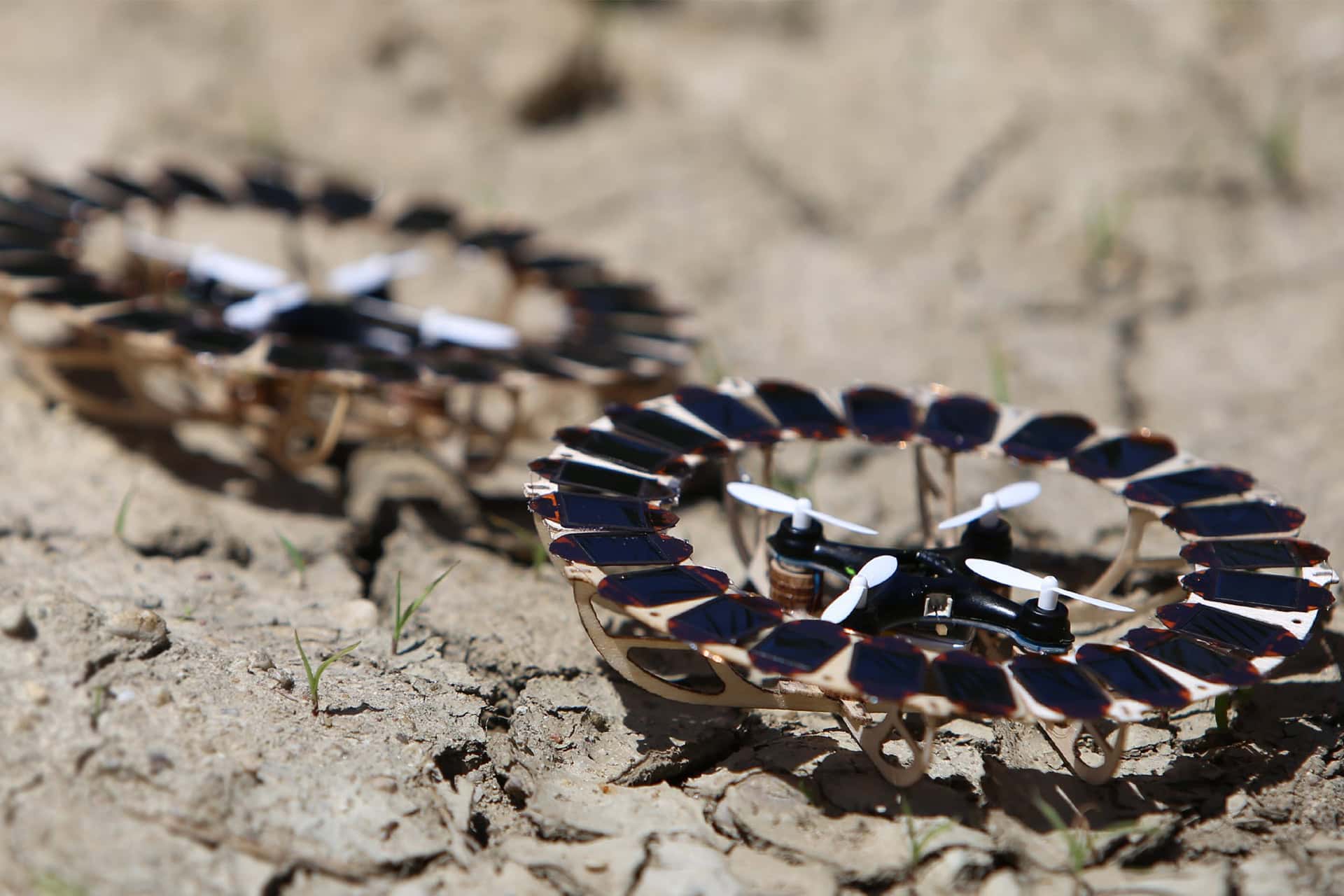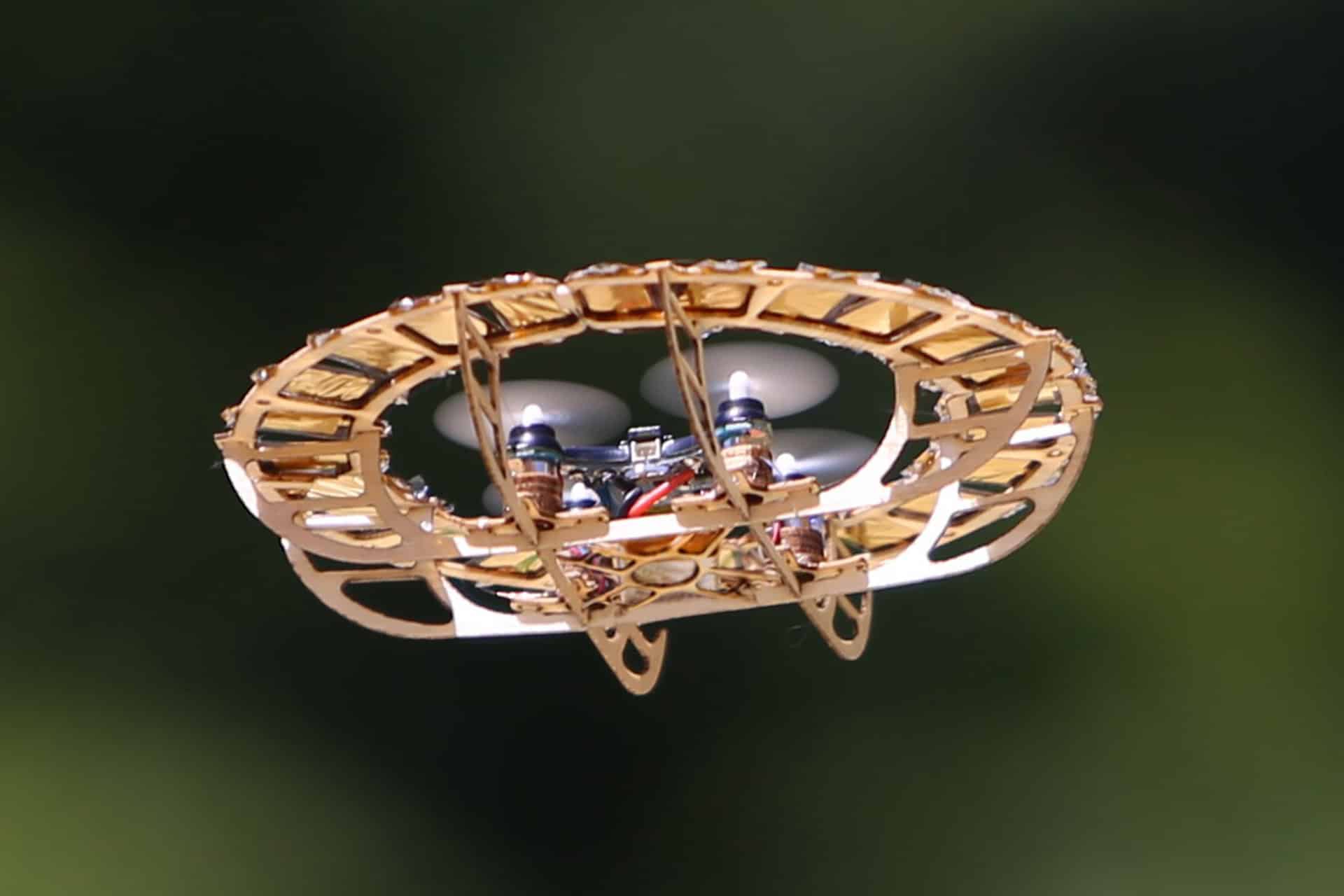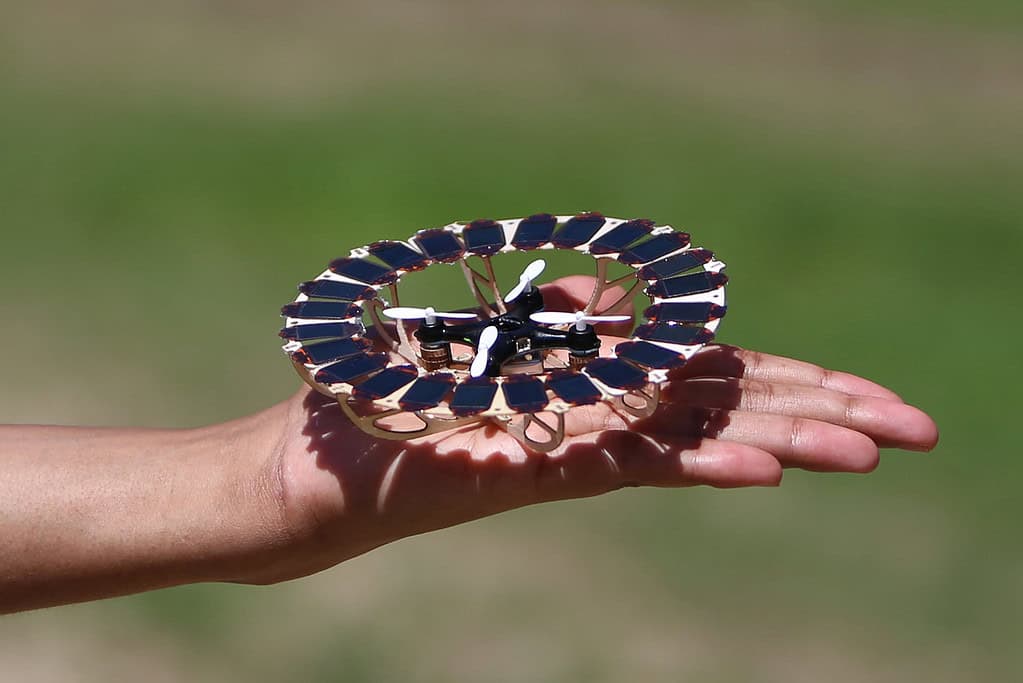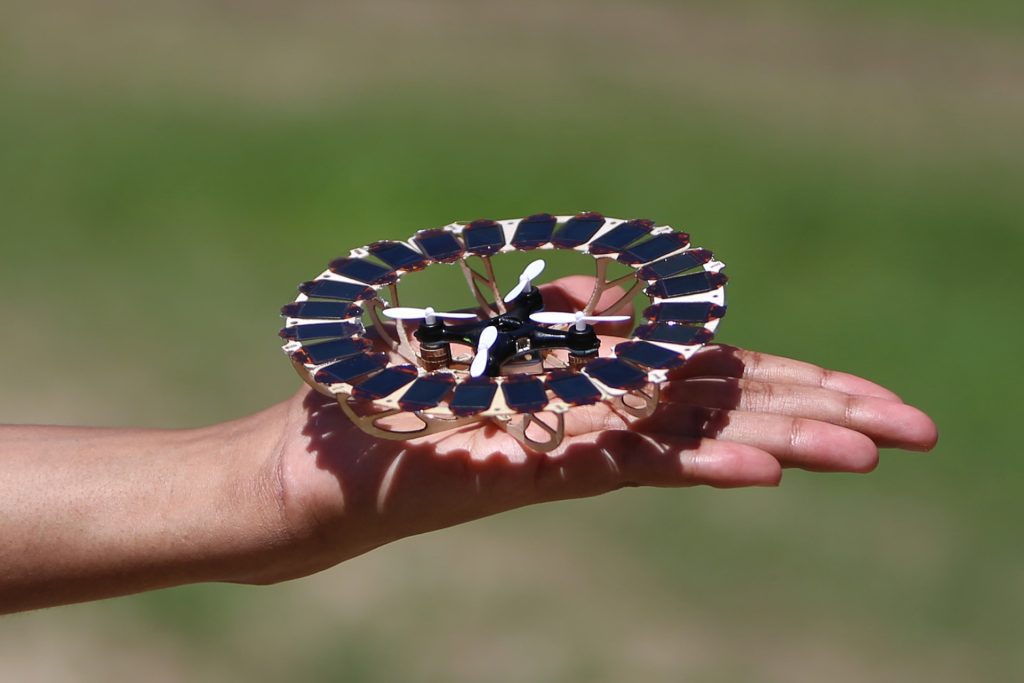
Researchers from Austria's Johannes Kepler University (JKU) Linz have created extremely thin, very light solar cells that can charge a drone. In good sunlight, this solar module can produce 250 mW of power or 44 watts per gram. While this isn't a large amount of power, the concept is impressive, enabling drones to function more independently. The researchers designed and flew an independent hybrid-solar-powered drone called the Solar Hopper to assess the performance of their solar cells.
During the flight tests, the solar hopper could function and complete multiple charge-flight-charge cycles solely by using sunlight to charge its batteries.
“The solar hopper showcases how an energy-autonomous aerial vehicle can execute various tasks, such as large-scale mapping, surveillance, search and rescue, reconnaissance, etc. Upon completing its mission, the hopper recharges and begins anew, highlighting its ability to operate continuously without external power sources,” Christoph Putz, one of the researchers and a PhD student at JKU Linz, told ZME Science.
Perovskite solar cells for drones
Although traditional solar cells are made of silicon, the thin and light cells powering the solar hopper are made of perovskite. This is a mineral of calcium titanium oxide used in LEDs, Li-ion battery applications, photodetectors, and lasers.
Recently, perovskite-based solar cells have gained attention due to their potential for high-efficiency and inexpensive manufacturing. A 2016 study suggests that while silicon cells cost 75 cents to produce one watt of power in ideal sunlight conditions, perovskite cells can achieve the same output for only 10 to 20 cents.
According to the researchers, these cells also offer many advantages over traditional silicon solar cells for powering independent drones.
For example, perovskite solar cells can be made in very thin layers, making them extremely lightweight without losing power output. In fact, the solar cells on the Solar Hopper are 20 times thinner than a human hair.
Compared to silicon cells, they also offer a high power-to-weight ratio, making them suitable for applications where weight is critical, such as aerial vehicles. Additionally, they can perform well even in low-light conditions, making them suitable for drones operating in changing lighting conditions like cloudy or partially shaded areas.
Moreover, they can be made on flexible surfaces, making them light and able to conform to complex surfaces.
“By leveraging these advantages, perovskite solar cells offer a compelling solution for powering autonomous aerial vehicles, enabling longer flight times, increased operational range, and enhanced mission capabilities,” Putz said.
Also, “The ultrathin solar cells are not exclusive to quadcopter drones; various aerial vehicles, including planes, blimps, and even wearable electronics like smartwatches, biosensors, or smartphones, can also leverage this technology for enhanced performance,” he added.
The Solar Hopper flight trials

Solar Hopper is a quadcopter drone with hybrid power and a unique appearance, equipped with a circular frame featuring 24 interconnected perovskite solar cells.
The entire solar module is 25 times lighter than the drone, and the weight of the perovskite cells is only 0.25 percent of the aircraft's total weight. Therefore, adding the circular frame to a drone does not impact performance or stability during flight.
The researchers conducted multiple Solar Hopper flight tests during which the drone recharged itself using the onboard solar module.
They discovered that the Solar Hopper could fly for over two minutes and then fully recharge in about 1.5 hours in the power-saving state, with communication turned off. In the ready-to-fly state, with all communication channels active, the drone took 3.5 hours to recharge.
“In our study, we have demonstrated six flight-recharge-flight cycles without any indication of performance degradation. It’s worth noting that we haven’t optimized the drone itself for efficiency. Our aim was to demonstrate how an off-the-shelf product can be converted into an energy-autonomous drone simply by integrating our solar cells,” Putz told ZME Science.
To see how the flight time changes, the researchers also flew the solar hopper without the solar module. They observed that when solar cells are on board, the flight time of the aircraft goes up by almost six percent.
This is just the start
The results from the Solar Hopper flight tests indicate that we can fly drones using sunlight. It also suggests that very lightweight perovskite solar cells can create new ways of integrating solar cells into new drone designs, extending their flight times, increasing payload capacity, and improving the overall performance of energy-autonomous aerial vehicles.

Additionally, this technology has the potential to substitute or add to various existing power sources across a range of applications. For example, in emergencies such as natural disasters, thin solar cells integrated into emergency shelters, communication equipment, or medical devices could offer a reliable source of electricity when traditional power sources are unavailable or disrupted.
However, perovskite solar cell modules like the one used by the researchers still have many limitations and are not ready for widespread usage.
For example, the current solar module design can only power small-scale drones, and can’t be used for large aerial vehicles. The cell recharging process takes a lot of time.
Putz and his colleagues are optimistic that with more research, they can enhance the scalability, performance, and stability of their solar module, and make it practical for use in large-scale drones and other applications. Elsewhere, researchers at Queen Mary University of London created their own solar-powered quadcopter, a 70-gram aircraft that can fly for an average time of 3.5 min and recharge in about 68 min.
“Continued research efforts will focus on further improving the environmental stability and efficiency of thin perovskite solar cells, ensuring their reliability for long-term use in various applications,” Putz told ZME Science.
The study is published in the journal Nature Energy.









